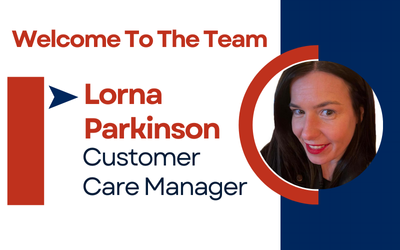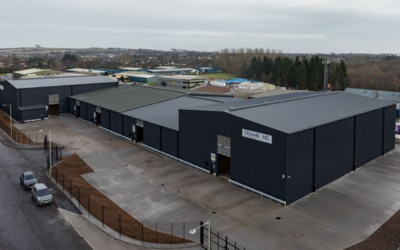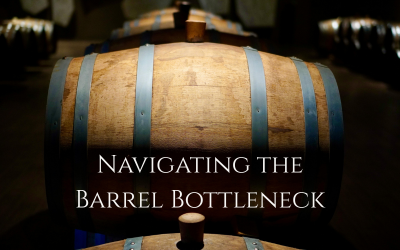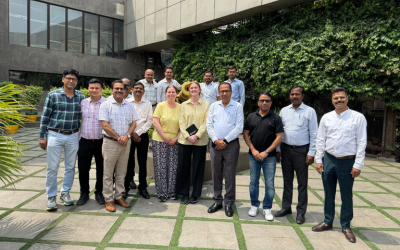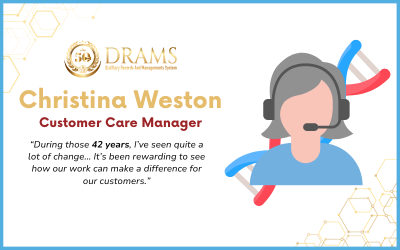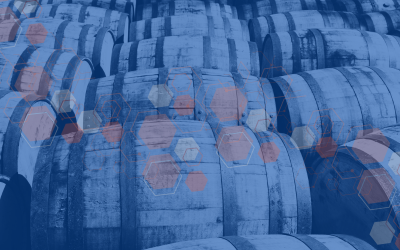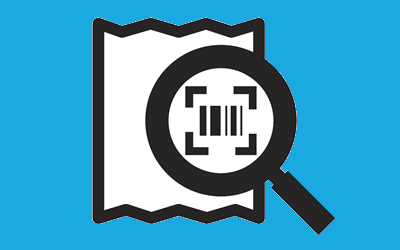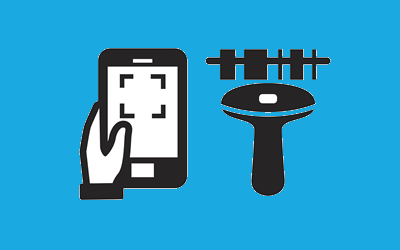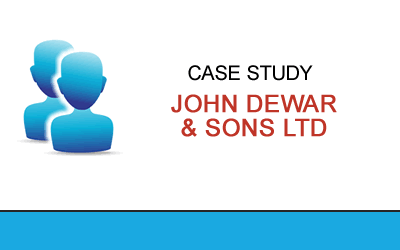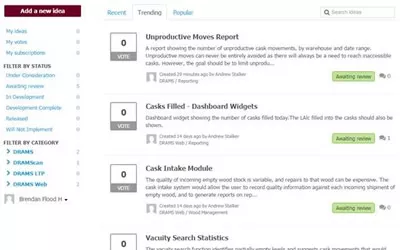If you are considering implementing a scanning solution, you may be wondering about the type of cask scanner to adopt. ‘Intrinsically safe’ cask scanners (more on this later) can cost thousands of pounds per device, so clearly it is important to make the right choice here.
In this guide we discuss the different options available to you, and outline which we feel are best suited for a cask scanning operation.
Part 1: ‘Intrinsically Safe’ Cask Scanners: What and why?
UK law dictates that electrical equipment used around whisky or maturing spirit production and warehousing must be ‘intrinsically safe’ – which essentially means they are incapable of generating a spark that may ignite explosive gases in the atmosphere.
Additionally, equipment must be ATEX certified (ATEX is a set of European directives relating to use of electrical equipment in hazardous areas).
While this should not be considered an absolute rule, in our experience whisky distillation, filling and dumping areas are usually classed as ‘Zone 1/21’ environments, while storage warehouses tend to be classed as ‘Zone 2/22’. See chart 1, below.
| European and IEC Classification | Definition of zone or division | North American Classification |
| Zone 0 (gases / Vapours) | An area in which an explosive mixture is continuously present or present for long periods | Class I Division 1 (gases) |
| Zone 1 (gases / Vapours) | An area in which an explosive mixture is likely to occur in normal operation | Class I Division 1 (gases) |
| Zone 2 (gases / Vapours) | An area in which an explosive mixture is not likely to occur in normal operation and if it occurs it will exist only for a short time. | Class I Division 2 (gases) |
| Zone 20 (dusts) | An area in which an explosive mixture is continuously present or present for long periods | Class II Division 1 (dusts) |
| Zone 21 (dusts) | An area in which an explosive mixture is likely to occur in normal operation | Class II Division 1 (dusts) |
| Zone 22 (dusts) | An area in which an explosive mixture is not likely to occur in normal operation and if it occurs it will exist only for a short time. | Class II Division 2 (dusts) |
Chart 1: zone classifications
While Zone 2/22 environments may be deemed a lower risk and therefore have less stringent requirements than Zone 1/21, we typically find that DRAMS customers will operate in both environments, with potential for scanners to be used across each location.
In such a scenario it is of course essential to use devices that conform to the stricter Zone 1/21 classification – as indeed most UK DRAMS customers do.
In summary: unless you are certain to only operate in Zone 2/22 environments, and have no likelihood of this situation changing, a Zone 1/21 compatible device is strongly recommended.
Zone 1/21 Devices
At present there are very few Zone 1/21 hand-held cask scanner devices available, though we have tested the DRAMScan application on currently available devices to ensure compatibility. Additionally, if you have identified a device for your operations then we would be very happy to advise you regarding compatibility. We have developed DRAMScan as a flexible solution to ensure compatibility with a wide range of devices.
Part 2: Scanning Applications
Installed versus web applications
In simple terms, your scanning application can be accessed in two ways: it can be an installed application designed for a particular Operating System (say, Android, or Microsoft’s Windows Mobile) that is ‘native’ to the scanner, or it can be created as a web application that simply resides on a web page and is visited via the scanner’s browser.
If you are using an installed application then you will of course be limited to using devices running the relevant Operating System. For example, if your scanning application is developed for Windows Mobile, you will require scanners running that system – which of course limits your choice of hardware.
By contrast, a web application offers the flexibility of compatibility with any Operating System – provided the scanner in question can run a suitable web browser.
In the past an installed application would have offered superior performance and usability, but developments in browser technology have levelled the playing field here, to the extent that the user experience will be superficially similar despite the different underlying technology.
Choosing an Operating System
If you own a Smartphone you probably already know that this is a fast-changing sector. You only need to look at the rise of Google’s Android (now the dominant Operating System for Smartphones, though falling recently) compared with the demise of Blackberry.
At present there are a limited number of intrinsically safe scanners available, so your choice of Operating System is limited – though this is sure to change. We are already seeing Android-powered intrinsically safe tablet PCs appear on the market, and handheld scanners are likely to follow.
However, the continual shifting of momentum makes this a notoriously unpredictable sector – which (remembering the hefty price tag) makes investing in scanner hardware a somewhat risky proposition. After all, nothing jeopardises the validity of a technology decision more frequently than obsolescence – and nobody wants to end up with the scanning equivalent of a Betamax video player.
The Operating System question: Playing it safe
While it is inevitable that you will have to choose an Operating System for your scanner (or select one by default because there are limited intrinsically safe options available to you), it is possible to protect yourself from the dangers of Operating System redundancy by divorcing the scanning application from the scanner’s Operating System.
How? By using a web application that will run on any Operating System.
Future compatibility and hardware flexibility are the main reasons we chose to adopt a browser-based approach for DRAMScan. Given the turbulent nature of this market – and high cost of hardware – we felt it was unwise to tie DRAMS customers to a single operating system.
By choosing to develop a web application, we knew the DRAMScan application would be compatible with any scanner that can run a suitable browser, ensuring total compatibility both with existing scanners – and also those developed in the future.
The web application: Introducing HTML5
We said earlier that in the past installed applications offered superior performance and usability in comparison with web applications, but that this has now changed. So what has made the difference? The answer is HTML5: a website programming language that delivers a level of performance previously only available with installed applications.
HTML5 has proven so successful that many have proclaimed it the future of application development, largely due to its wide compatibility and promise of a “develop once, deploy everywhere” utopia, while VDC Research has found that “39% of mobile developers expect to do more projects creating applications with HTML5”.
What is HTML5? Firstly, you are almost certainly already using it – even if you aren’t actually aware of it. HTML5 is incorporated into all of the major browsers we use every day, including Internet Explorer, Firefox, Chrome, Safari and Opera. It’s the reason you can watch video and listen to music embedded within web pages without having to install plugins first – as you may remember was the case in the past.
In terms of DRAMScan, HTML5 means we have been able to create a browser-based application that can run locally on the scanning device even when network coverage is unavailable. And of course, because the application is only visited by the browser, it will work with all Operating Systems, which removes the compatibility issue and risk of scanner redundancy.
HTML5 is a generational leap in terms of website technology, and essentially creates extremely fast and responsive web pages that are perfectly happy working offline (as strange as that may sound).
With HTML5, the scanner can very quickly download required application data, to be stored locally for use should the internet connection be unavailable.
This is of course crucial in a warehouse environment, because it means the scanners will work effectively when disconnected from the server, and simply upload scanned data as soon as a connection is detected again.
HTML5 offers total flexibility regarding compatible operating systems while retaining the ability to run a local application – in other words: the best of both worlds.
The other big advantage: System updates
The other main advantage of HTML5 over installed applications is that it dramatically simplifies the process of applying system upgrades.
With an installed application, scanner software updates must be applied to each device individually – which can of course be time consuming when a number of devices are involved.
By contrast, an HTML5-based scanner simply accesses a web server – so once the new software has been installed centrally, scanners accessing it instantly have access to the new code without any installation or delay.
Conclusion
We believe that an HTML5-powered web application is the perfect platform for an innovative scanning solution.
Instant software updates alone makes for a compelling argument, but most importantly, a web-based approach ensures compatibility with the intrinsically safe scanning hardware of your choice; whether that be your existing devices, or the next big thing that comes along in the next few months – or even years.
Disclaimer:
The information in this article is for general guidance only, relating to the selection of scanning hardware in relation to compatibility with the DRAMScan system. We offer no advice relating to explosion hazards. Choosing and installing intrinsically safe/ATEX certified hardware is a specialised task requiring skills and technical expertise in a number of different areas. Before taking any action you should seek expert advice specific to your circumstances.





